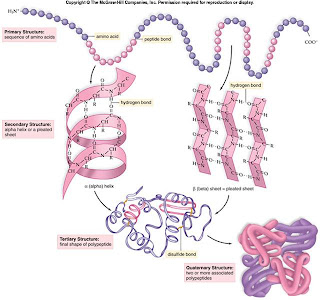Cell Lab
This is a model of a “Cell” using some everyday baking items.
List of items used:
· Large bowl
· Pot to boil water in
· Measuring Cup
· Gallon size Plastic Bag
· Jell-O
· Peach
· Gummy Worms
· Sour Gummy Worms
· Lemon Drops
· Candy Wrapper
· M&M’S
· Sprinkles
· Toothpicks
· Raisins
· Gumball
*Process To Creating The Cell*
I first boiled about 1/12 cups of water then mixed the jello along with the boiling water into a large bowl. I stirred it around until the jello was all dissolved; I then added the same amount of cold water. I poured the jello into a gallon size plastic bag and placed it inside a cereal size bowl and placed it in the fridge for about 3 and half hours. After it had set up I than began inserting items and labeling the items accordingly.
*Items Presented in Cell & description*
1. Cell Membrane – This is t he thin layer of protein and fat that surrounds the cell. It is represented by the plastic bag.
2. Centrosome – This is a small body located near the nucleus. This is where microtubules are made. During cell division, the centrosome divides and the two parts move to opposite sides of the dividing cell. It is represented by a gum ball.
3. Cytoplasm – This is the jellylike material outside the cell nucleus in which the organelles are located. It is represented by the jello.
4. Golgi body – It is a flattened, layered, sac-like organelle that looks like a stack of pancakes and is located near the nucleus. It produces the membranes that surround the lysosomes.. It is represented by folded ribbons of a hard candy.
5. Lysosome – This is round organelles surrounded by a membrane and containing digestive enzymes. This is where the digestion of cell nutrients takes place. They are represented by M&M's.
6. Mitochondrion – A spherical to rod-shaped organelles with a double membrane. The inner membrane is infolded many times, forming a series of projections. The mitochondrion converts the energy stored in glucose into ATP for the cell. Represented by raisins.
7. Nuclear membrane - The membrane that surrounds the nucleus. It is represented by the peach skin.
8. Nucleolus – Is an organelle within the nucleus. It is where ribosomal RNA is produced. Some cells have more than one nucleolus. It is represented by the peach pit.
9. Nucleus – A spherical body containing many organelles, including the nucleolus. The nucleus controls many of the functions of the cell protein and contains DNA. It is represented by the peach.
9. Ribosome –A small organelles composed of RNA-rich cytoplasmic granules that are sites of protein synthesis. They are represented by candy sprinkles.
10. Rough endoplasmic reticulum - (rough ER) A vast system of interconnected, infolded sacks that are located in the cell's cytoplasm (. Rough ER is covered with ribosome’s that give it a rough appearance. Rough ER transports materials through the cell and produces proteins in sacks called cistern the Golgi body. It is represented by sour gummy worms.
11. Smooth endoplasmic reticulum - (smooth ER) a vast system of interconnected, membranous, infolded and convoluted tubes that are located in the cell's cytoplasm. The space within the ER is called the ER lumen. Smooth ER transports materials through the cell. It contains enzymes and produces and digests lipids and membrane proteins. It is represented by gummy worms.
12. Vacuole – A fluid-filled, membrane-surrounded cavities inside a cell. The vacuole fills with food being digested and waste material that is on its way out of the cell. They are represented by lemon heads.
*What I learned*
After I completed this project I have a better understanding of just how a human cell works. I always knew the different objects that made up a cell but never really had a good understanding of what exactly they were and what their functions were. I feel much more confident now after completing the cell lab.
*Was It Fun?*
I really enjoyed this lab project a lot. I have done several labs over the years in school and never before have I done one like this. I was able to do it and have my boyfriend assist me when needed and he actually enjoyed it as well. It is a fun project while at the same time a learning one at that. Because after everything you learned while reading the chapters it’s like you finally put it all together in a model.
 Items used to identify the different parts of a cell.
Items used to identify the different parts of a cell. This is an overall view of the cell completly before all parts were labeled.
This is an overall view of the cell completly before all parts were labeled. This image represents: Golgi Body(candy wrapper), cytoplasm(jello), centrosome(gum ball), cell membrane(plastic bag)
This image represents: Golgi Body(candy wrapper), cytoplasm(jello), centrosome(gum ball), cell membrane(plastic bag) This image is labeling: Nucleus(peach), Nucleolus(peach pit), Nuclear Membrane(peach skin), Lysosome(m&m's), and Mitochandria(raisins).
This image is labeling: Nucleus(peach), Nucleolus(peach pit), Nuclear Membrane(peach skin), Lysosome(m&m's), and Mitochandria(raisins).









